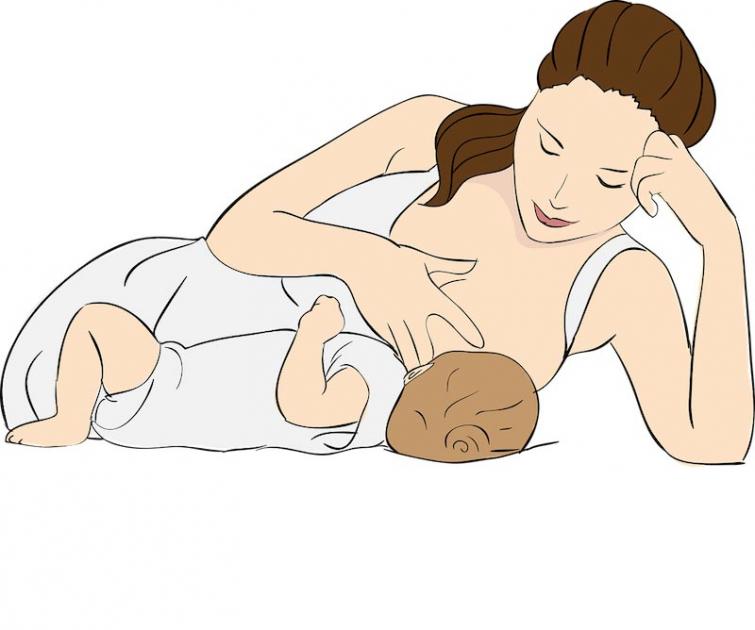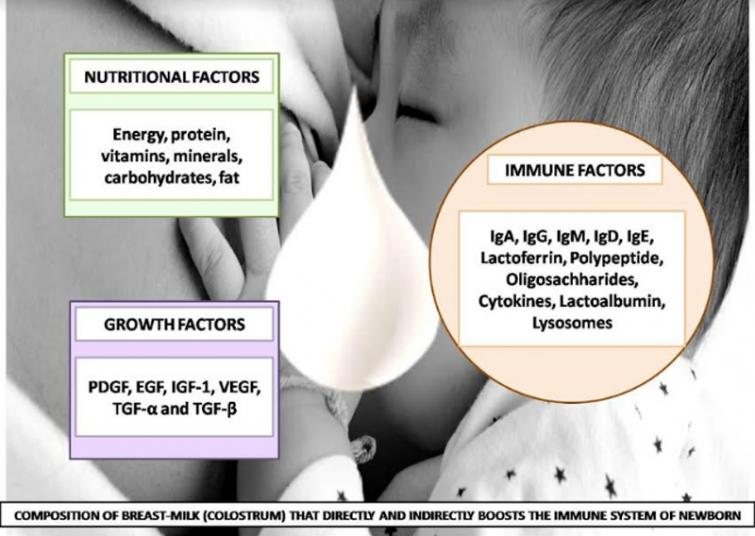
Breast milk is a nutritional supplement for new borns in fight against Covid-19
"God could not be everywhere, and therefore he made mothers." Nothing better sums up this Rudyard Kipling quote than the stories of motherhood in Covid-19 times.
“A COVID-19 positive mother gives birth to a COVID 19 negative child at Howrah Sanjibani Hospital”. This is one of the headlines in West Bengal media recently. But how?
Placenta, the filtering unit of mother’s blood, allows oxygen and nutrients to the fetus but averts infections, and in last months of pregnancy it supplies antibodies so that the new born can safeguard itself.
The mother nature nurtures the new born with great care and affection providing antiviral agents in the colostrum, the first milk. Breast milk, the source of an immune-booster lactoferrin, is an antiviral agent. Saliva, tears, nasal and bronchial secretions carry lactoferrin to fight against viruses.
Lactoferrin, a constituent of infant formula food, fight out a broad spectrum of RNA and DNA viruses, such as cytomegalovirus, herpes simplex virus, HIV virus, poliovirus, hepatitis B and C virus, human papilloma virus, influenza A virus, rotavirus and so on .
Viruses, attach its counterpart, the receptor molecule, a heparan sulfate proteoglycans (HSPGs) on the cell boundary so that it can be internalized while lactoferrin prevents the cellular up take of the viruses by their initial binding to receptor molecule and thus confers protection to the host against viral infections.
de Haan, Milewska and Lang in three separate studies observed that lactoferrin prevents viral entry of murine coronaviruses, human coronaviruses hCOV-NL63 and pseudotyped SARS-CoV respectively. Both viruses SARS-CoV and SARS CoV-2 possess the homology in their spike protein structures and depend on same ACE2 receptor for cell entry, lactoferrin competes for the anchoring site of both candidates.
Besides reducing viral entry, Lactoferrin can also suppresses virus replication after the virus enters the cell as reported in the case of HIV. Lactoferrin supplementation in the range of 100-1000mg per day in humans was found to reduce the incidences of cold and cold-like symptoms.
Lactoferrin is reported to enhance innate immunity, specifically Natural Killer cell activity and stimulates immune cells like neutrophil (a group of WBC) aggregation and adhesion during SARS-CoV infection.
Current thinking suggests that mortality from COVID-19 is not simply due to viral infection but is the result of huge synthesis of a group of molecules by our own immune system to fight against COVID-19, called cytokine, in selected patients associated with hyper-inflammation leading to acute respiratory distress.

As the inflammatory profile in severe COVID-19 cases is characterized by increases in cytokines and acute phase reactants, lactoferrin could be an appropriate choice of adjunct treatment as an immunoceutical.
Kruzel’s group of scientists recently (2017) proposed lactoferrin to treat the ‘cytokine storm’ reflecting hyper-induction of inflammatory responses in the course of sepsis.
One interesting observation regarding the clinical epidemiology of the current COVID-19 pandemic that may be relevant to lactoferrin was the negligible incidence of the infection in children.
Indeed, China has reported that the incidence of COVID-19 in children aged 0-10 was only 0.9%. COVID-19 cases were rarer still in neonates and infants with a total of only 9 infected and hospitalized cases between December 8, 2019 and February 6, 2020 out of a total 31,211 cases reported in China.
Breast feeding or wide use of lactoferrin containing infant formula in this population has been postulated to account for the above observation but this remains to be validated.
Since the onset of the corona pandemic in India, a slowdown in the economy restrains a class of people’s access to nutritious food and aggravates food insecurity in various ways, including limited wages as well as job opportunities.
In this context, would the further research and development of supplemental lactoferrin against COVID-19 outbreak make a meaning at all? Hope, the challenges India faces in its battle against corona would elicit the satisfactory outcomes in the frontier area of therapeutic research.
(Amrita Chakroborty is an Assistant Professor in Physiology, Jhargram Raj College (Girl’s wing). Dr. Pubali Dhar is Associate Professor, Laboratory of Food Science and Technology, Food and Nutrition Division, University of Calcutta. lfsthsc.org)
Support Our Journalism
We cannot do without you.. your contribution supports unbiased journalism
IBNS is not driven by any ism- not wokeism, not racism, not skewed secularism, not hyper right-wing or left liberal ideals, nor by any hardline religious beliefs or hyper nationalism. We want to serve you good old objective news, as they are. We do not judge or preach. We let people decide for themselves. We only try to present factual and well-sourced news.







